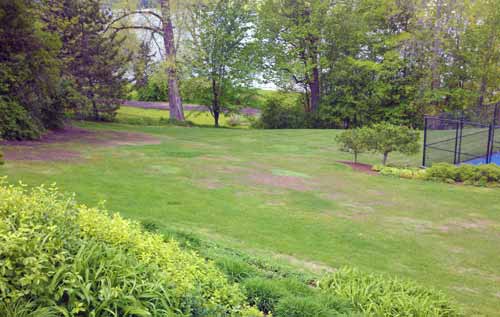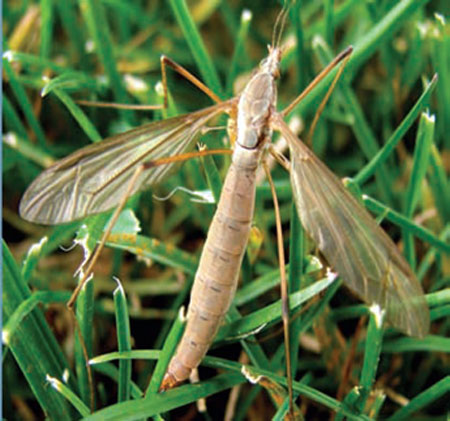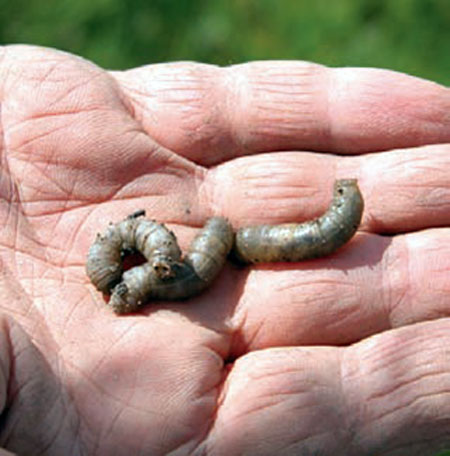Watch for European crane fly damage in Grand Rapids, Mich., and Detroit area
Watch for European crane fly damage to lawns and golf courses in May. To be better prepared, here are pictures of European crane fly larvae, adults and turf damage.
The next three weeks is when you are most likely to see European crane fly damage to lawns and golf course roughs (as of May 2). At infested sites, the turf is extremely thin or dead in patches, with large crane fly larvae in the soil and on the surface. The large, “leather jacket” larvae are expected to continue feeding through most of May before pupating in the soil and emerging as an adult crane fly, which looks like a 1-inch long mosquito. Michigan State University Extension advises now is a good time to look for crane fly damage.

European crane fly damage to a recreational lawn in Grand Rapids, Mich.
Photo credit: Kevin Timmer, Tender Lawn Care
So far, crane fly damage has only been reported from around the Grand Rapids, Mich., and Detroit areas, but each year the infested area increases. The thin turf and digging activity by skunks and raccoons looks like grub damage, but can be easily distinguished by the presence of gray to tan-colored leather jackets (see photos below).


Left, European crane fly adult, Right, European crane fly larvae. Photo credits: Dave Shetlar, OSU
Infested lawns can be treated now with Sevin, or another turf product containing carbaryl, to prevent additional damage this spring. However, to prevent damage late next fall and in spring of 2014, lawn care professionals or golf course superintendents will need use one of the following products and the indicated timing below. Timing is critical because lawns treated with imidacloprid in May are not protected from the next generation of crane fly larvae that will cause damage in fall of 2013 and spring of 2014.
Products and timing of products used to prevent damage late next fall and spring 2014
|
Product |
Correct timing for European crane fly |
|
Sevin (carbaryl) |
In May or late fall when turf damage is discovered |
|
The following treatments are preventative: |
|
|
Acelepryn (Chlorantraniliprole) |
May (also protects against grubs and other turf pests) |
|
Arena (clothianidin) |
Late July and August (also protects against grubs) |
|
Merit (imidacloprid) |
Should provide protection when applied from late July to mid-August (also protects against grubs) |
|
Aloft (clothianidin + bifenthrin) |
|
|
Meridian (thiamethoxam) |
|
Dr. Smitley’s work is funded in part by MSU‘s AgBioResearch.



 Print
Print Email
Email
